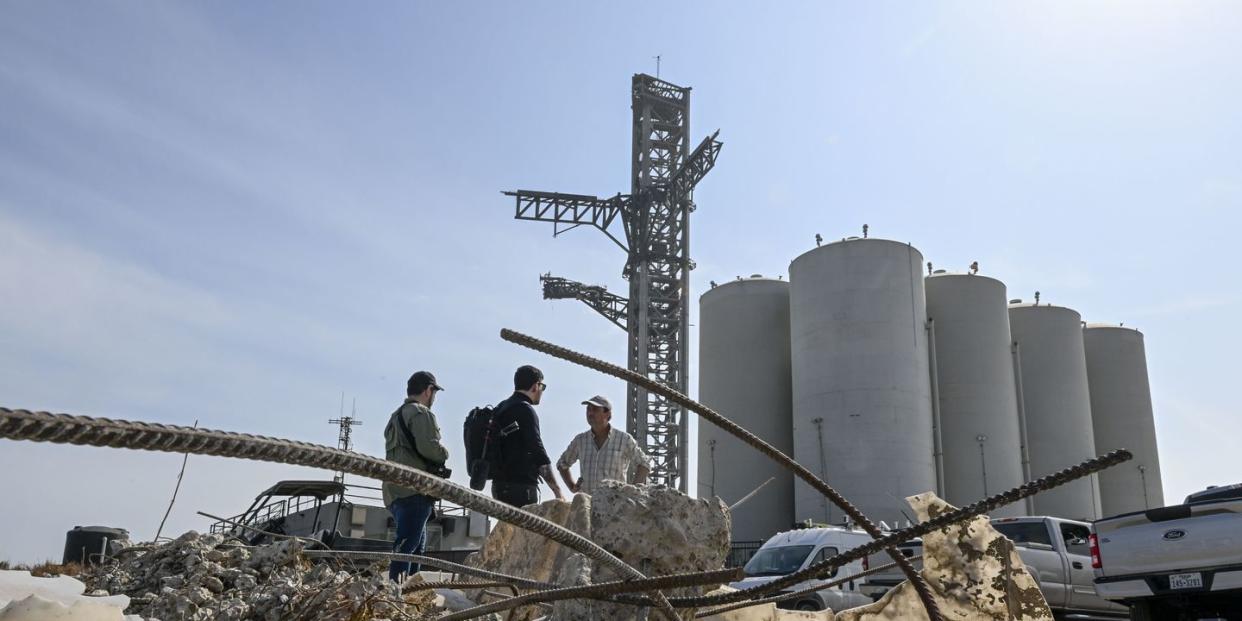Oops, SpaceX Blew Up Its Own Launch Pad and Started a Fire in a State Park

During its recent Starship launch, SpaceX blew up its own launchpad, and caused a huge cloud of debris, sent chunks of concrete flying, and started a fire in a state park.
Experts have noted the lack of either a fire trench or water-cooled system at the launch site, which may have been the reason for the explosion. The cause, however, has not been confirmed.
The FAA is currently investigating the launch, and has grounded the Starship. SpaceX will have to reapply for their launch license before their next test flight.
SpaceX might have just learned that moving too fast means that things get broken—big things. In last week’s attempted first launch of the company’s Starship spacecraft, expected to take people back to the Moon on the Artemis III mission in 2025, SpaceX turned its launchpad into what one Twitter user called “Crater McCrater face.”
Crater McCrater face underneath OLM . Holy cow! #SpaceX #Starbase #Starship #Superheavy pic.twitter.com/mgjefc3MNe
— LabPadre (@LabPadre) April 20, 2023
The violent destruction of the launch site has caused the Federal Aviation Administration (FAA) to ground the rocket for the time being and launch an investigation into what caused the fallout. A cloud of dust and debris tore through the nearby town of Port Isabel, coating everything in a thick layer of dust, shaking buildings and shattering windows. The beaches of nearby Boca Chica experienced the same, potentially harming the protected environments of endangered animals. Closer cities that had been evacuated experienced flying chunks of concrete.
And Boca Chica State Park caught on fire. Yes, on fire. The launch caused a blaze over 3.5 acres of land, some of which was in the state park. Though Texas officials have yet to see any evidence of dead wildlife, the disruption of their behavior has already been noted.
It’s totally normal for things to not go according to plan when testing revolutionary technology. And Starship definitely qualifies as revolutionary. It’s the biggest rocket ever built, it has the most engines of any rocket ever created, and—the pièce de résistance—it’s built to be reusable, which will slash costs of space missions and facilitate many more visits to the stars. If SpaceX can get it working, that is.
What isn’t normal, however, is level of fallout from last week’s test launch. And it might not have been a fluke. Most rockets, when they fire, divert the firey fuel that comes out the back end into something called a flame trench, which carries it harmlessly away from the launchpad. Other protective options, like water-cooled systems, are also on the table.
Experts have noted that SpaceX had nothing of the sort present at their Starship launch. According to SpaceX CEO Elon Musk’s Twitter, the company had been working on a “massive water-cooled, steel plate to go under the launch mount” but it “wasn’t ready in time and we wrongly thought, based on static fire data, that Fondag [the concrete] would make it through 1 launch.” Evidently, they were wrong, and bouncing back from this destruction could cost take the company several months.
3 months ago, we started building a massive water-cooled, steel plate to go under the launch mount.
Wasn’t ready in time & we wrongly thought, based on static fire data, that Fondag would make it through 1 launch.
Looks like we can be ready to launch again in 1 to 2 months.— Elon Musk (@elonmusk) April 21, 2023
Some have speculated that the explosion of the concrete launch pad (the launch tower escaped fairly unscathed) may have caused damage to the ship, and resulted in the issues that caused SpaceX to trigger Starship’s “rapid unscheduled disassembly.”
This theory remains unconfirmed, but the other fallout from the launch has been more than confirmed. SpaceX will have to reapply for their launch license before they can try their hands at another test flight.
Yes, the rocket got off the ground, and yes, the investors, partners, and ground team are happy for what they learned in the process. But if SpaceX wants to continue moving as fast as they seem to desire, they’re most likely going to have to make more careful choices. Blowing up your launch pad will slow anyone down.
You Might Also Like


